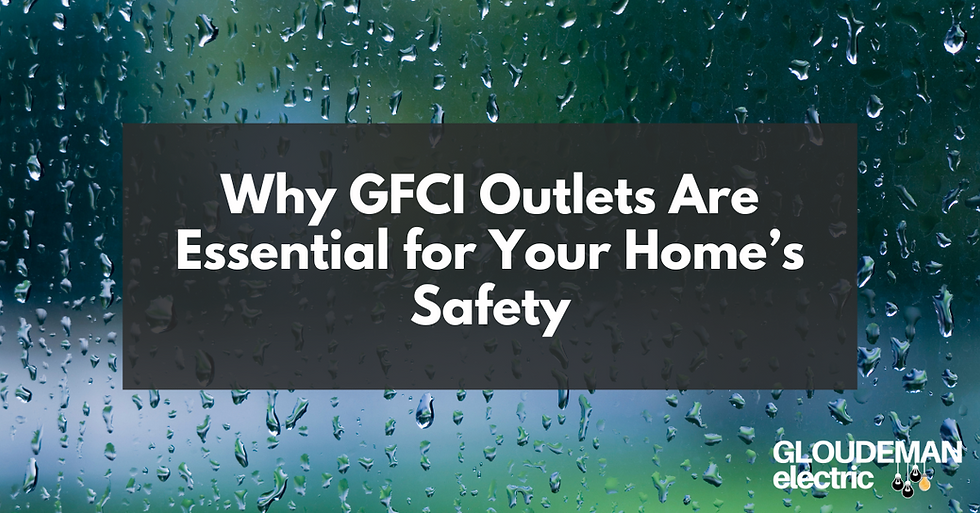Understanding Electrical Inspection Reports: Common Terms Explained by a Licensed Electrician
- Gloudeman Electric

- Oct 8
- 2 min read
If you’ve ever bought or sold a home, you’ve probably stared at an inspection report and thought, What does any of this mean? The electrical section in particular can read like another language.
Here are some of the most common electrical terms you might see on an inspection report and what they actually mean.
1. Open Ground
An open ground means the safety (ground) wire on a receptacle or piece of equipment is missing or not connected. This wire’s job is to safely carry electricity back to the panel if a live wire touches metal. Without it, you lose an important layer of protection against shock.
2. Reverse Polarity
This happens when the hot and neutral wires are flipped on a receptacle. Electricity flows in the wrong direction, which can create safety hazards for you and your devices. It’s a quick
fix, but an important one.
3. No GFCI Protection

GFCI stands for Ground Fault Circuit Interrupter. These outlets are required in areas exposed to moisture like bathrooms, kitchens, garages, and outdoors. If your report says “no GFCI protection,” it means those areas aren’t properly safeguarded against electrical shock.
4. Double Tapping

Double tapping refers to connecting two wires under one terminal screw in a panel. It’s rarely allowed — the only breaker brand that permits it is Square D (specific models). Most circuits are designed for a single conductor, and doubling up can lead to loose connections and overheating.
5. Improper Bonding
Bonding ensures that all metal components (like water and gas lines) are connected to the same electrical ground. If bonding is done incorrectly or not at all, there’s a risk those metal parts could become energized. Only metal piping needs bonding, plastic or PEX lines do not.
6. Missing Junction Box Covers
Every junction box needs a cover. Without one, dust, debris, or flammable materials can enter and create a fire hazard, especially if an arc occurs. This is one of those “small issue, big consequence” findings.
7. Over-Fused Circuits
An over-fused circuit means the wire is rated for less amperage than the breaker. For example, using a 30-amp breaker on a 20-amp wire will let the wire overheat before the breaker trips. That’s a fire waiting to happen.
8. Knob and Tube Wiring

This old-fashioned wiring system is often found in historic homes. It uses porcelain knobs and tubes to run exposed wires through walls and attics. While some inspectors consider it “safe if undisturbed,” we don’t recommend relying on it. It lacks insulation and grounding, and it’s not designed for modern electrical loads.
9. Loose Outlets
When an outlet wiggles or feels unstable, it can loosen the wiring behind it and cause arcing or intermittent power. The fix is usually simple: tightening the box or adding spacers to make it secure.
Final Thoughts
Inspection reports can be intimidating, but most issues they list are common and fixable. The key is understanding what they mean so you can prioritize repairs safely.
At Gloudeman Electric, we help Mount Pleasant and Charleston area homeowners interpret inspection findings and correct them the right way--safely, up to code, and with no shortcuts.
If you’re buying or selling a home and need a licensed electrician to review or repair items from your inspection report, contact Gloudeman Electric today.








Comments